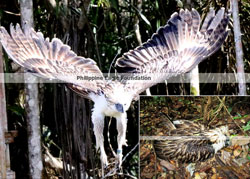PH committed to good forest governance – Paje

The Philippine government is committed to pursue policy objectives that will ensure the preservation of its forests and stop deforestation, Environment Secretary Ramon J.P. Paje said on Tuesday.
“Despite fiscal limitations, the Philippines is seriously endeavoring to preserve its forests and reverse the trend of deforestation,” Paje said in his speech during the opening of the five-day Asia Pacific Forestry Week at the Fontana Hotel in Clark Freezone in Pampanga.
“We continue to pursue vital reforms through the imposition of forest protection measures and the rehabilitation of denuded forestlands,” he added.
Paje cited the National Greening Program (NGP) as among the measures the government is currently implementing to achieve its targets on forest rehabilitation.
Since 2011, he said, a total of 1,351,803 hectares of land have been reforested under the NGP, which is also part of the government’s climate change mitigation and adaptation initiatives.
“The NGP goal is to plant 1.5 billion trees in 1.5 million hectares from 2011-2016. Upon completion, this would translate to an absorption capacity of 30 million tons of carbon dioxide annually,” Paje pointed out.
Aside from the NGP, the Aquino administration also pursued an intensified anti-illegal logging campaign which significantly reduced by 88 percent the number of municipalities and cities in the country considered as illegal logging hotspots.
During the event that was attended by more than 1,000 delegates from over 30 countries, Paje expressed the willingness of the Philippine delegation to “share our experiences and best practices” on forest governance.
Paje also noted the “bold steps” undertaken by other nations within the Asia-Pacific region to combat deforestation, as pointed out in the 2015 Global Forest Resources Assessment made by the United Nations’ Food and Agriculture Organization (FAO).
Citing the FAO report, Paje said that eight of 10 countries reported to have the greatest annual forest area gain are member countries of the Asia Pacific Forestry Commission (APFC), including the Philippines, which was ranked fifth in the list.
Despite such gains, Paje lamented that deforestation still occurs in some parts of the region, thus requiring innovation in forest governance.
“What is called for at this rapidly changing time is a dynamic and adaptable forest management paradigm that can adapt to the needs of the times,” Paje said.
The environment chief also called for more efforts in informing the public that “reducing deforestation is not incompatible with economic development.”
“Forests and the ecosystem services they provide serve to ensure the productivity in the other economic sectors and the very survival of forest-dependent communities in our region,” he said.
Paje, meanwhile, expressed his gratitude to delegates from 33 countries in the Asia Pacific region for giving the Philippines, through the Department of Environment and Natural Resources, the opportunity to host the 26th session of the APFC with FAO.
He also acknowledge the participation of soon to be APFC members Brunei Darussalam and the Democratic Peoples Republic of Korea; international development agencies like the UN Forum on Forests and the International Tropical Timber Organization; and other partner organizations.
Paje said the AFFW was indeed a “golden opportunity” to bring together a large number of stakeholders under a single roof to deliberate on forestry issues of mutual concern, as well as to develop programs for collaborative action.#
- Details
- Parent Category: News & Events
- Category: Press Releases






